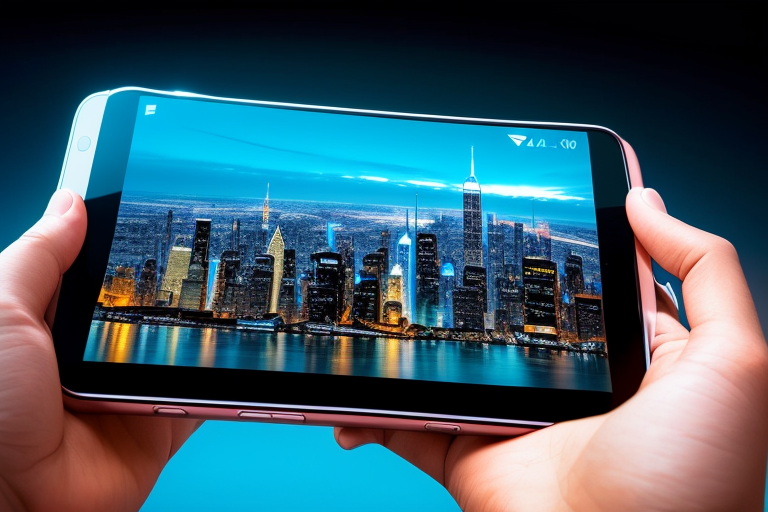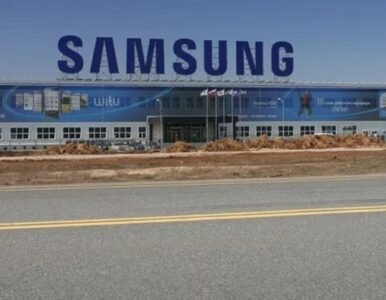The first touchscreen phone was made in 1992 by IBM. Known as the Simon Personal Communicator, it was a revolutionary device that combined the functionalities of a mobile phone and a PDA (Personal Digital Assistant). The Simon featured a monochrome touchscreen display and a stylus for input. Although it was not widely adopted at the time, the Simon paved the way for future advancements in touchscreen technology.
The introduction of the first touchscreen phone changed the world in numerous ways. It transformed the way people interacted with their devices, making them more intuitive and user-friendly. Touchscreen technology allowed for more efficient navigation and control, eliminating the need for physical buttons and keyboards. This innovation opened up new possibilities for mobile computing and revolutionized the smartphone industry.
Evolution of Mobile Phones
The evolution of mobile phones has been a remarkable journey that has transformed the way we communicate and connect with the world. From their humble beginnings as bulky devices with limited functionality, mobile phones have undergone significant advancements to become the sleek and versatile smartphones we know today. This evolution can be traced back to the early days of telecommunication when the first mobile phones were introduced.
In the early days, mobile phones were large and heavy, primarily used for voice calls and limited text messaging. They operated on analog networks and required large antennas for signal reception. However, as technology progressed, mobile phones became smaller, more portable, and capable of offering a wider range of features. The introduction of digital networks in the 1990s marked a major milestone in the evolution of mobile phones, enabling faster and more reliable communication.
With the advent of touchscreen technology, mobile phones took a leap forward in terms of usability and functionality. The introduction of touchscreens revolutionized the way we interacted with our devices, eliminating the need for physical buttons and enabling intuitive gestures. This breakthrough allowed for more immersive experiences, enhanced navigation, and the ability to access a wide range of applications with a simple touch.
The Birth of the Touchscreen Phone
The birth of the touchscreen phone marked a significant milestone in the history of mobile technology. It revolutionized the way we interact with our devices and paved the way for the modern smartphone era. The first touchscreen phone was created through a combination of innovative ideas and technological advancements.
In the early 2000s, companies like IBM and Nokia began experimenting with touchscreen technology. However, it was Apple’s introduction of the iPhone in 2007 that truly transformed the industry. The iPhone featured a capacitive touchscreen that responded to the touch of a finger, allowing users to navigate through applications and interact with the device in a more intuitive way.
This breakthrough was made possible by advancements in display technology, particularly the development of capacitive touchscreens. Unlike resistive touchscreens, which relied on pressure to register input, capacitive touchscreens used the electrical properties of the human body to detect touch. This made them more responsive and accurate, enhancing the user experience.
The birth of the touchscreen phone not only changed the way we interact with our devices, but it also sparked a wave of innovation and competition in the smartphone industry. Other companies quickly followed suit, releasing their own touchscreen devices and pushing the boundaries of what was possible.
Impact on User Experience
The introduction of touchscreen phones has completely revolutionized the way people interact with their devices, significantly enhancing the user experience. Prior to the advent of touchscreen technology, mobile phones relied on physical buttons and keypads for navigation and input. This limited the functionality and usability of these devices, making them less intuitive and user-friendly.
With the introduction of touchscreen phones, users gained the ability to directly interact with the device’s interface by simply touching the screen. This eliminated the need for physical buttons, allowing for a more streamlined and immersive user experience. Touchscreen technology enabled gestures such as swiping, tapping, and pinching, making navigation and interaction more intuitive and natural.
The impact of touchscreen phones on user experience can be seen in various aspects of daily life. From scrolling through social media feeds and browsing the internet to playing games and accessing apps, touchscreen technology has made these activities more seamless and enjoyable. The touch-based interface has also facilitated faster and more efficient communication through features like virtual keyboards and predictive text.
Moreover, touchscreen phones have made smartphones more accessible and user-friendly for people of all ages and abilities. The intuitive nature of touchscreens has eliminated barriers for individuals who may have struggled with physical buttons or keypads. This has opened up new possibilities for individuals with disabilities, allowing them to fully participate in the digital world.
In conclusion, the introduction of touchscreen phones has had a profound impact on user experience, revolutionizing the way people interact with their devices. The intuitive touch-based interface has made smartphones more accessible, user-friendly, and enjoyable for individuals of all backgrounds. As technology continues to advance, we can expect further innovations in touchscreen technology, enhancing the user experience even further.
Enhanced Accessibility and Convenience
Enhanced Accessibility and Convenience
With the introduction of touchscreen technology, smartphones have become more accessible and user-friendly for people of all ages and abilities. The intuitive nature of touchscreens allows users to interact with their devices in a more natural and effortless way. This has opened up a whole new world of possibilities for individuals who may have previously struggled with traditional button-based interfaces.
One of the key advantages of touchscreen technology is its ability to accommodate different levels of dexterity and mobility. Unlike physical buttons, which can be difficult to press for those with limited finger or hand movement, touchscreens only require a gentle tap or swipe. This makes it easier for individuals with disabilities or conditions such as arthritis to navigate through menus, type messages, and access various features on their smartphones.
Furthermore, touchscreens have also revolutionized the way we interact with smartphones by introducing multi-touch capabilities. This means that users can perform various actions simultaneously, such as zooming in and out, rotating images, or scrolling through web pages with just a few simple gestures. This level of convenience and fluidity has greatly enhanced the overall user experience and made smartphones more accessible to a wider range of individuals.
Changing the Way We Communicate
The advent of touchscreen phones has revolutionized the way we communicate, transforming the landscape of interpersonal connections. With the rise of text messaging and social media, our modes of communication have become more instant and interconnected than ever before. The convenience and accessibility offered by touchscreen technology have paved the way for seamless communication across different platforms and devices.
Text messaging, once limited to traditional keypads, has now evolved into a more intuitive and efficient experience with touchscreen phones. The ease of typing on a virtual keyboard allows for faster and more accurate messaging, enabling us to communicate with friends, family, and colleagues with just a few taps. Additionally, the introduction of predictive text and autocorrect features has further enhanced our messaging capabilities, making communication even more convenient and error-free.
Furthermore, touchscreen phones have played a significant role in the rise of social media platforms. These platforms have become integral parts of our daily lives, enabling us to connect with people from all corners of the globe. With a simple touch of the screen, we can share our thoughts, photos, and videos, allowing us to express ourselves and stay connected with our social networks. The ability to instantly communicate and engage with others has transformed the way we interact and share information, fostering a sense of community and global connectivity.
Technological Advancements and Innovations
Technological advancements in touchscreen technology have played a pivotal role in shaping the modern smartphone industry. From the early days of resistive touchscreens to the more advanced capacitive touchscreens used today, there have been significant improvements in terms of responsiveness, accuracy, and overall user experience.
One of the key advancements in touchscreen technology was the introduction of multitouch capabilities. This allowed users to interact with their smartphones using multiple fingers, enabling gestures such as pinch-to-zoom and swipe navigation. This innovation revolutionized the way we interact with our devices, making them more intuitive and user-friendly.
Another notable advancement is the integration of haptic feedback, which provides tactile sensations when interacting with the touchscreen. This technology enhances the user experience by simulating the feeling of pressing physical buttons or keys, providing a more immersive and satisfying touch interaction.
Furthermore, the development of edge-to-edge displays and curved screens has pushed the boundaries of design and aesthetics in smartphones. These advancements have not only improved the visual appeal of devices but also increased the screen-to-body ratio, allowing for larger and more immersive displays.
Additionally, advancements in display resolution and color accuracy have resulted in sharper and more vibrant visuals on smartphone screens. This has enhanced the overall multimedia experience, making it more enjoyable to watch videos, view photos, and play games on mobile devices.
The integration of biometric authentication, such as fingerprint sensors and facial recognition technology, is another significant innovation in touchscreen smartphones. These features provide enhanced security and convenience, allowing users to unlock their devices or authenticate transactions with a simple touch or look.
In summary, technological advancements in touchscreen technology have paved the way for numerous innovations in the smartphone industry. From multitouch capabilities to haptic feedback and edge-to-edge displays, these advancements have significantly improved the user experience and propelled the evolution of smartphones.
The Future of Touchscreen Technology
The future of touchscreen technology holds exciting possibilities for the world of mobile phones. As technology continues to advance at a rapid pace, we can expect to see even more innovative features and applications being integrated into touchscreen devices. From foldable screens to haptic feedback, emerging technologies are set to redefine the way we interact with our smartphones.
One of the most anticipated advancements in touchscreen technology is the development of foldable screens. This technology allows for a seamless transition between a compact smartphone and a larger tablet-like device, offering users the convenience of a larger screen without sacrificing portability. With foldable screens, users can enjoy a more immersive and versatile mobile experience.
Another area of focus in the future of touchscreen technology is haptic feedback. This technology aims to enhance the user experience by providing tactile feedback through vibrations or other physical sensations. Imagine being able to feel the texture of virtual buttons on your touchscreen or receiving haptic feedback when interacting with certain applications. Haptic feedback has the potential to revolutionize the way we interact with our smartphones, making them even more intuitive and engaging.
Furthermore, the integration of artificial intelligence (AI) is expected to play a significant role in the future of touchscreen technology. AI-powered virtual assistants, such as Siri and Google Assistant, have already become commonplace on smartphones. However, as AI continues to advance, we can expect to see more sophisticated and intuitive interfaces that adapt to users’ preferences and anticipate their needs.
In conclusion, the future of touchscreen technology is filled with exciting possibilities. From foldable screens to haptic feedback and AI integration, these advancements have the potential to transform the way we interact with our smartphones. As technology continues to evolve, we can look forward to a future where touchscreen devices become even more intuitive, immersive, and seamlessly integrated into our daily lives.
Emerging Technologies
As touchscreen technology continues to evolve, there are several emerging technologies that have the potential to redefine touchscreen interactions in the future. These advancements aim to enhance user experience, improve functionality, and push the boundaries of what touchscreen devices can do.
One such technology is foldable screens. These innovative displays allow smartphones and other devices to be folded and unfolded, providing users with a larger screen when needed and increased portability when folded. Foldable screens offer a new level of flexibility and versatility, enabling users to multitask, view content in new ways, and take advantage of larger displays without sacrificing portability.
Another exciting development is haptic feedback. This technology provides users with tactile feedback through vibrations or other physical sensations when interacting with touchscreens. Haptic feedback can simulate the feeling of pressing physical buttons, adding a sense of realism and enhancing the user’s sense of touch. It can also provide valuable feedback in gaming and virtual reality applications, creating a more immersive experience.
These emerging technologies have the potential to revolutionize touchscreen interactions, offering new possibilities and pushing the boundaries of what we thought was possible. As they continue to develop and become more widely adopted, we can expect to see even more innovative and exciting touchscreen devices in the future.
Integration of Artificial Intelligence
The integration of Artificial Intelligence (AI) has revolutionized the way we interact with touchscreen devices. With the advent of AI-powered virtual assistants and intuitive interfaces, our smartphones have become more than just communication tools. They have become our personal assistants, always ready to help us navigate through our daily lives.
AI-powered virtual assistants, such as Siri, Google Assistant, and Alexa, have become an integral part of touchscreen devices. These virtual assistants use AI algorithms to understand natural language and provide relevant information and assistance. Whether it’s setting reminders, answering questions, or even controlling smart home devices, virtual assistants have made our lives easier and more convenient.
In addition to virtual assistants, intuitive interfaces powered by AI have also transformed the way we interact with touchscreen devices. These interfaces use machine learning algorithms to understand user behavior and adapt to their preferences. For example, predictive text on smartphones learns from our typing patterns to suggest words and phrases, making typing faster and more efficient.
The integration of AI has also enabled advanced features such as facial recognition and voice commands. With AI algorithms, our smartphones can now recognize our faces and unlock instantly, adding an extra layer of security. Voice commands have also become more accurate and responsive, allowing us to control our devices with simple voice instructions.
As AI continues to advance, we can expect even more exciting developments in the integration of AI with touchscreen devices. From personalized recommendations based on our preferences to AI-powered augmented reality experiences, the future of touchscreen technology looks promising and full of possibilities.
Frequently Asked Questions
- 1. When was the first touchscreen phone made?
The first touchscreen phone was made in 1992 by IBM. However, it was not a smartphone like the ones we use today. It was called the IBM Simon and it had a touchscreen that allowed users to make calls, send emails, and even use some basic apps.
- 2. How did the first touchscreen phone change the world?
The introduction of the first touchscreen phone revolutionized the way we interact with technology. It paved the way for the development of smartphones and transformed them into powerful devices that we rely on for communication, entertainment, and productivity. Touchscreen technology made it easier for people to navigate through menus, type messages, and access information, ultimately changing the way we live and work.
- 3. What impact did touchscreen phones have on user experience?
Touchscreen phones significantly enhanced user experience by providing a more intuitive and interactive interface. Users could now directly interact with the screen using their fingers, eliminating the need for physical buttons or keyboards. This made smartphones more accessible and user-friendly for people of all ages and abilities.
- 4. How did touchscreen phones change the way we communicate?
Touchscreen phones revolutionized communication by introducing features like text messaging and social media apps. Text messaging became a popular and convenient way to stay connected, and social media platforms allowed people to share their thoughts, photos, and videos instantly. Touchscreen phones made communication faster, more visual, and accessible to a larger audience.
- 5. What technological advancements have shaped touchscreen phones?
Over the years, touchscreen technology has advanced significantly. Capacitive touchscreens replaced resistive ones, providing better responsiveness and multi-touch capabilities. Display resolutions improved, offering sharper visuals. Additionally, advancements in processing power and software development have enabled more sophisticated features and applications on touchscreen phones.
- 6. What does the future hold for touchscreen technology?
The future of touchscreen technology looks promising. Emerging technologies like foldable screens and haptic feedback are expected to redefine touchscreen interactions, allowing for more versatile and immersive experiences. Furthermore, the integration of artificial intelligence will continue to transform how we interact with touchscreen devices, with AI-powered virtual assistants becoming more intuitive and personalized.






